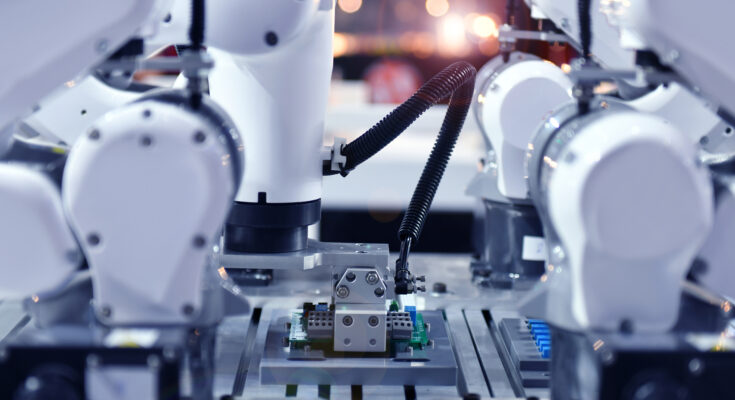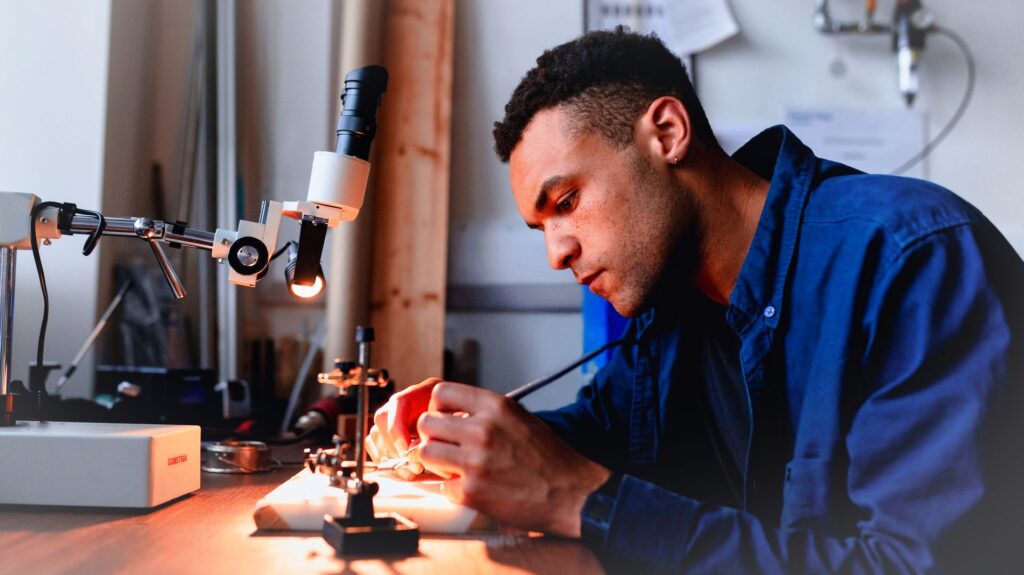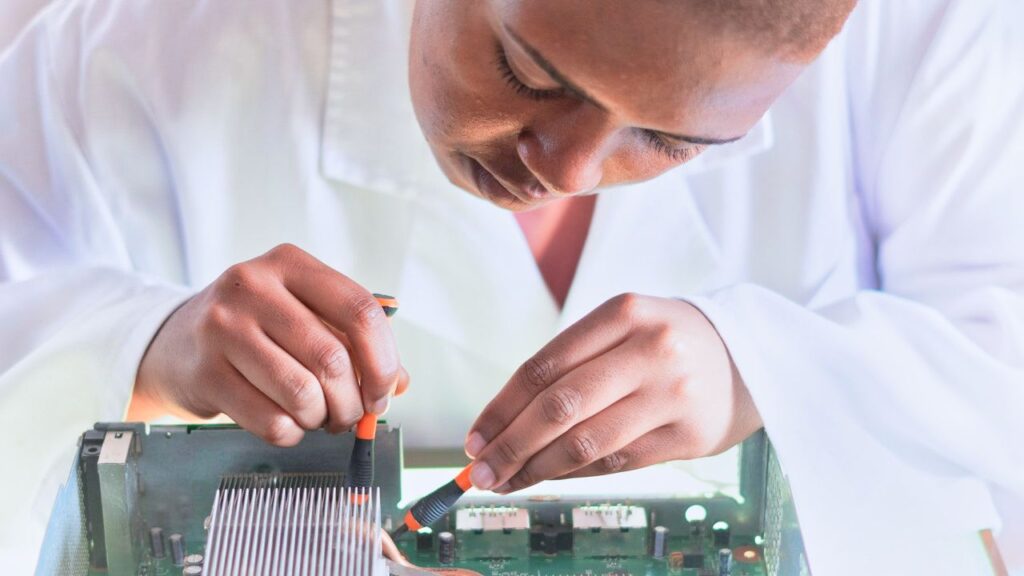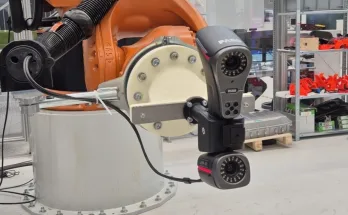Want to improve the productivity of your entire electronic manufacturing process?
Electronic product testing is a bottleneck for many companies. Testing is a vital step to ensure product quality but it also takes a lot of time. As a non-value-added task, this can make it difficult to improve.
Achieving efficient testing is a challenge for many electronics manufacturers.
As the EETimes reported some years ago “unless the verification bottleneck is solved, the cost of future electronic systems is going to skyrocket.” While the article was referring specifically to System-on-Chip (SoC) verification, this bottleneck is still present across the electronics industry.
Robots can be a very effective method to achieve a more efficient product testing process.
Robots Aren’t Just for Manufacturing Tasks
You might assume that robots are best in manufacturing tasks.
It’s certainly true that robots are often used for process tasks in electronics manufacturing. Tasks like circuit board assembly, soldering, and glue dispensing are increasingly performed by robots in the industry.
However, just because robots are traditionally used for manufacturing doesn’t mean they aren’t suited to other types of tasks.
Robotic product testing is still quite uncommon in the electronics industry. But, it can be a very beneficial task for companies looking to increase the overall productivity of their facilities.
5 Types of Product Testing Suitable for Robots
There are, of course, many different types of product testing. Your specific processes may or may not be possible to automate with a robot.
Here are 5 types of product testing processes that robots can automate:
1. Functional Testing of Buttons and Touchscreens
Unlike other forms of testing, robots can closely mimic human actions. This makes them perfect for functional testing of physical user interface elements, like buttons or touchscreens.
For example, you can add a touchscreen pen to the robot and it will operate the screen as a human would.
2. Stress Testing of Electronic Casings
Electronic products that are designed to be rugged and hard-wearing need to undergo stress testing.
Robots can mimic the types of stress the device will experience in real life which makes them perfect for this type of testing.
3. Machine Tending of Product Testing Machines
Of course, many dedicated product testing machines already exist on the market. You likely use some already. You don’t need to throw out everything to use robots!
A machine tending robot can remove the repetitive task of loading and unloading your existing product testing machines from the hands of a human worker, allowing them to perform more value-added tasks.
4. Visual Inspection with Cameras or Sensors
Perhaps your testing process involves analyzing visual images of your electronic products or testing them with other sensors. Collecting this data is arduous for your inspection engineers. It would be better to spend their time analyzing the collected data.
Robots are a great option for collecting this sensor data and help to reduce the inspection bottleneck.
5. Probe Inspection
Continuity testing and other types of probe inspection are often part of the testing procedure in electronics manufacturing. This can be a dull task for humans, who can also introduce inconstancies in the testing.
A robot fitted with a testing probe offers a far more consistent approach to electronics testing.
A Great Reason to Use Robots for Electronic Product Testing
While automated verification is common in software development and SoC design, other aspects of electronic product testing have traditionally been more difficult to automate.
As you can see from the list above, robotics allows you to automate many more types of product testing than were possible in the past.
But, there is one big reason that electronic product testing is better with a robot than it is with human workers…
Testing requires repetitive consistency and humans are not consistent.
We humans excel at tasks that involve our cognitive abilities. We are not really good in tasks that require us to perform exactly the same physical motion every time.
Robots, on the other hand, are extremely consistent.
3 More Good Reasons to Use Robotic Product Testing
On top of the consistency benefits, here are 3 more reasons that robots are better at electronic product testing than humans are:
1. Allows for Optimization of Testing Process
Thanks to the high repeatability of robots, you can continue to optimize your product testing processes over time. Even making a small improvement to the process can add up to huge time savings and performance boosts over time.
2. More Consistent Data Collection
As well as catching quality issues before the products leave your facility, a huge benefit of product testing is the data that you collect. This data allows you to trace faults back to their source and improve the overall quality of your products. Robots produce much more consistent data than humans which makes the data more useful.
3. Better Reporting of Faults
The improved consistency of collected data also makes it much easier to report faults. With human data collection, you always have uncertainty about whether the faults have been accurately recorded. With a robot, you can be sure that data points are consistently recorded.
One Key Factor for Successful Electronic Product Testing with Robots
If you are looking to improve your electronic product testing with a robot, there is one factor many companies overlook: robot programming.
Using the right programming tool can speed up the robot deployment, improve the maintainability of the robot code, and increase the flexibility of your robotic product testing cell.
If you want to start with robotic product testing, a good option is to use a good offline programming tool. You can find out more about this option here.
What electronic product testing task could benefit from robotic automation in your facility? Tell us in the comments below or join the discussion on LinkedIn, Twitter, Facebook, Instagram, or in the RoboDK Forum.







